Article-At-A-Glance
- The best beginner e-commerce platforms offer drag-and-drop store builders and pre-made templates.
- Easy online store platforms like Shopify, Wix, and Squarespace simplify setup and payments.
- Affordable e-commerce software options help beginners start selling online without coding.
- E-commerce platforms for beginners now include AI-powered tools to boost sales and automate marketing.
- Always compare pricing, support, and scalability before choosing your e-commerce website builder.
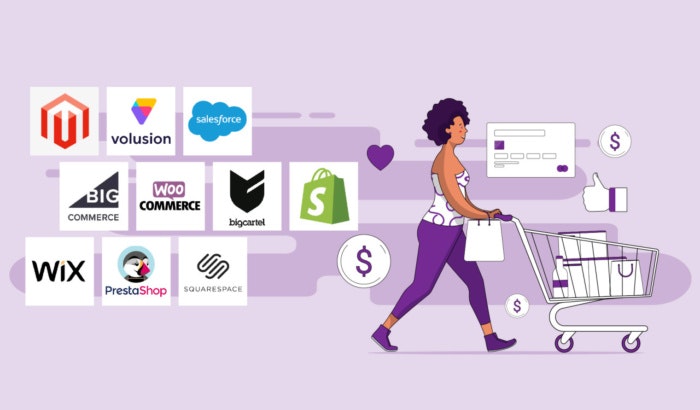
“The 10 best ecommerce platforms for …” from 99designs.com and used with no modifications.
Launching your first online store shouldn’t feel like climbing Mount Everest without gear. The right e-commerce platform can make the difference between a smooth launch and months of frustration.
With dozens of options on the market, finding the perfect beginner-friendly platform requires balancing ease-of-use, cost, and growth potential. As online shopping continues to expand—with global e-commerce sales projected to reach $6.3 trillion in 2023—even small businesses need a digital storefront that can compete with established retailers. Market Business Watch has analyzed the leading platforms to identify which truly deliver on their promises to beginners.
This comprehensive guide will walk you through the best e-commerce platforms designed specifically for those just starting their online selling journey, with clear comparisons of features, pricing, and support options to help you make an informed decision.
At-a-Glance: Top E-commerce Platforms for Beginners
When evaluating platforms for new online sellers, certain options consistently rise to the top based on their intuitive interfaces, reasonable pricing structures, and quality support systems. The ideal platform should eliminate technical barriers while providing professional-looking results without requiring design expertise or coding knowledge.
5 Best E-commerce Platforms for Complete Beginners
After testing dozens of platforms and analyzing thousands of user reviews, these five solutions stand out as the most accessible for first-time online store owners. Each offers a distinct approach to simplifying the store creation process while maintaining professional quality. For a more detailed comparison, you can explore this review of e-commerce platforms that highlights their features and benefits.
While many platforms claim to be “beginner-friendly,” these five have proven track records of successfully launching new entrepreneurs with minimal technical frustration. They represent different approaches to the same challenge: making e-commerce accessible to everyone.
Let’s examine what makes each one uniquely suited to different types of beginning sellers, from creative professionals to brick-and-mortar retailers expanding online.
Shopify: Most User-Friendly All-in-One Solution
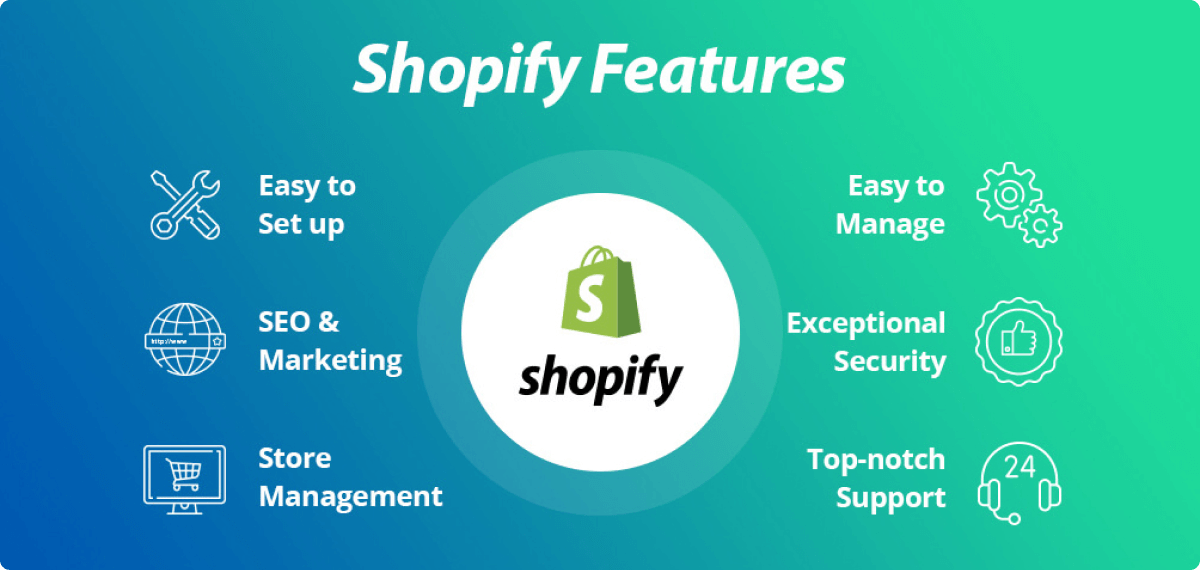
“Shopify: User-Friendly E-Commerce …” from mrcltech.com and used with no modifications.
Shopify has earned its reputation as the gold standard for beginner e-commerce platforms by combining simplicity with powerful features. The platform powers over 1.7 million businesses worldwide, with a significant percentage being first-time online sellers. Its intuitive dashboard organizes everything from product listings to order fulfillment in a logical workflow that guides new users through the store creation process.
The platform shines through its comprehensive approach—hosting, security, payment processing, and marketing tools are all integrated into a single monthly subscription. This elimination of technical complexity allows new store owners to focus on products and customers rather than website management. While not the cheapest option, Shopify’s all-inclusive approach prevents the surprise costs and technical headaches that often plague beginners on other platforms.
Wix: Best for Creative Control Without Coding
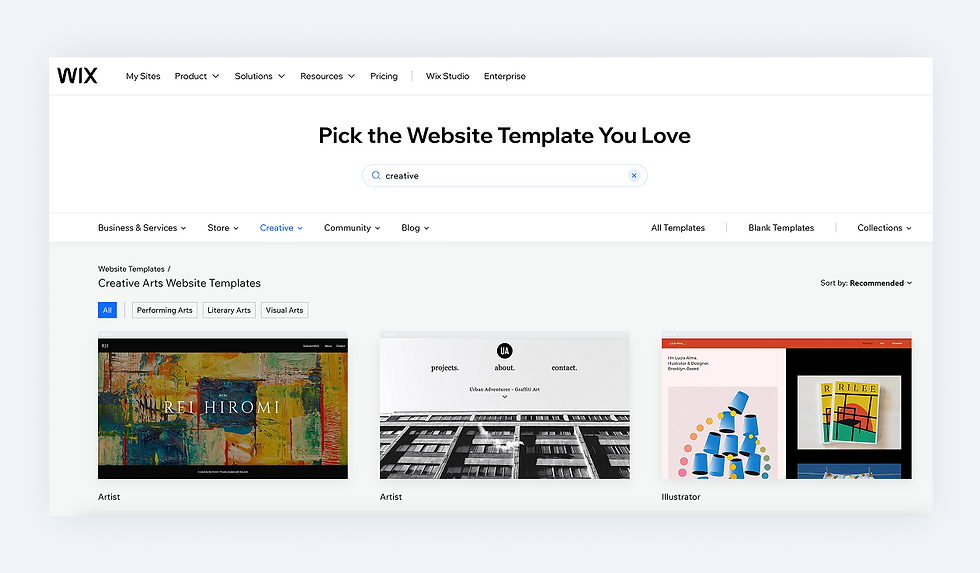
“5 best website builders for creatives …” from www.wix.com and used with no modifications.
Wix has transformed from a simple website builder into a robust e-commerce solution that prioritizes creative freedom. Its true drag-and-drop editor gives beginners unprecedented control over their store’s appearance without requiring any technical skills. This makes it particularly appealing to visually-oriented entrepreneurs who want their store design to reflect their brand’s unique personality.
Square Online: Easiest Free Option to Get Started

“Online Store from Your Square Account …” from squareup.com and used with no modifications.
Square Online stands out as the most accessible entry point for absolute beginners, offering a genuinely functional free plan that allows unlimited product listings with no monthly fees. The platform only makes money when you make sales through its 2.9% + $0.30 per transaction fee structure. This zero-risk approach is ideal for testing business concepts or for seasonal sellers who don’t want ongoing expenses during slower periods.
- Completely free plan available with unlimited products
- Seamless integration with Square POS for brick-and-mortar retailers
- Automatic inventory synchronization between online and physical stores
- Simple setup process with guided store creation wizard
- No monthly fees (only per-transaction fees on the free plan)
The platform’s connection to Square’s payment processing and point-of-sale systems makes it especially valuable for existing physical businesses making their first move online. Inventory stays synchronized across channels, eliminating the common beginner mistake of overselling products.
For those interested in exploring more innovative solutions, check out the future innovations in 5G and AI connectivity.
While Square Online lacks some of the design flexibility of other platforms, its streamlined approach removes decision fatigue for new sellers overwhelmed by too many options. The minimalist store designs load quickly and perform well on mobile devices—critical factors for converting visitors to customers.
Big Cartel: Simplest Platform for Artists and Makers
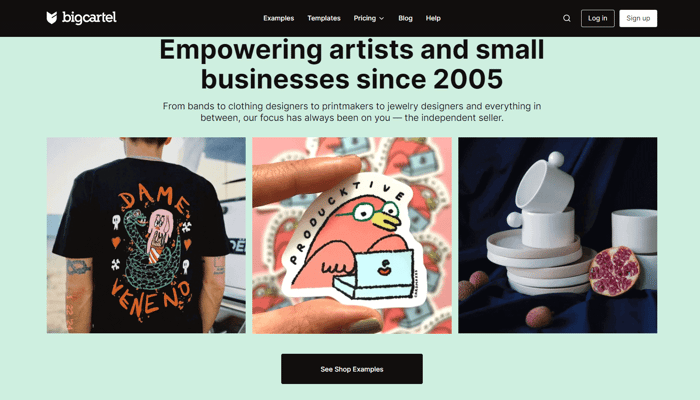
“Big Cartel Review – Best Online Stores …” from dropinblog.com and used with no modifications.
Big Cartel takes a different approach than most e-commerce platforms by focusing exclusively on the needs of artists, crafters, and small-batch creators. Its deliberately simplified interface removes features unnecessary for small inventories, resulting in the shortest learning curve of any platform reviewed. The free plan allows listing up to 5 products without any monthly fees, making it perfect for testing the e-commerce waters.
Unlike general-purpose platforms that try to serve everyone, Big Cartel’s specialized focus allows it to provide exactly what creative entrepreneurs need without overwhelming them with excessive options. Product listings emphasize visual presentation and storytelling, helping artists connect their creations to potential buyers. For beginners selling unique handmade items in limited quantities, this streamlined approach eliminates much of the complexity that makes launching an online store intimidating.
Squarespace: Best for Stunning Visual Storefronts
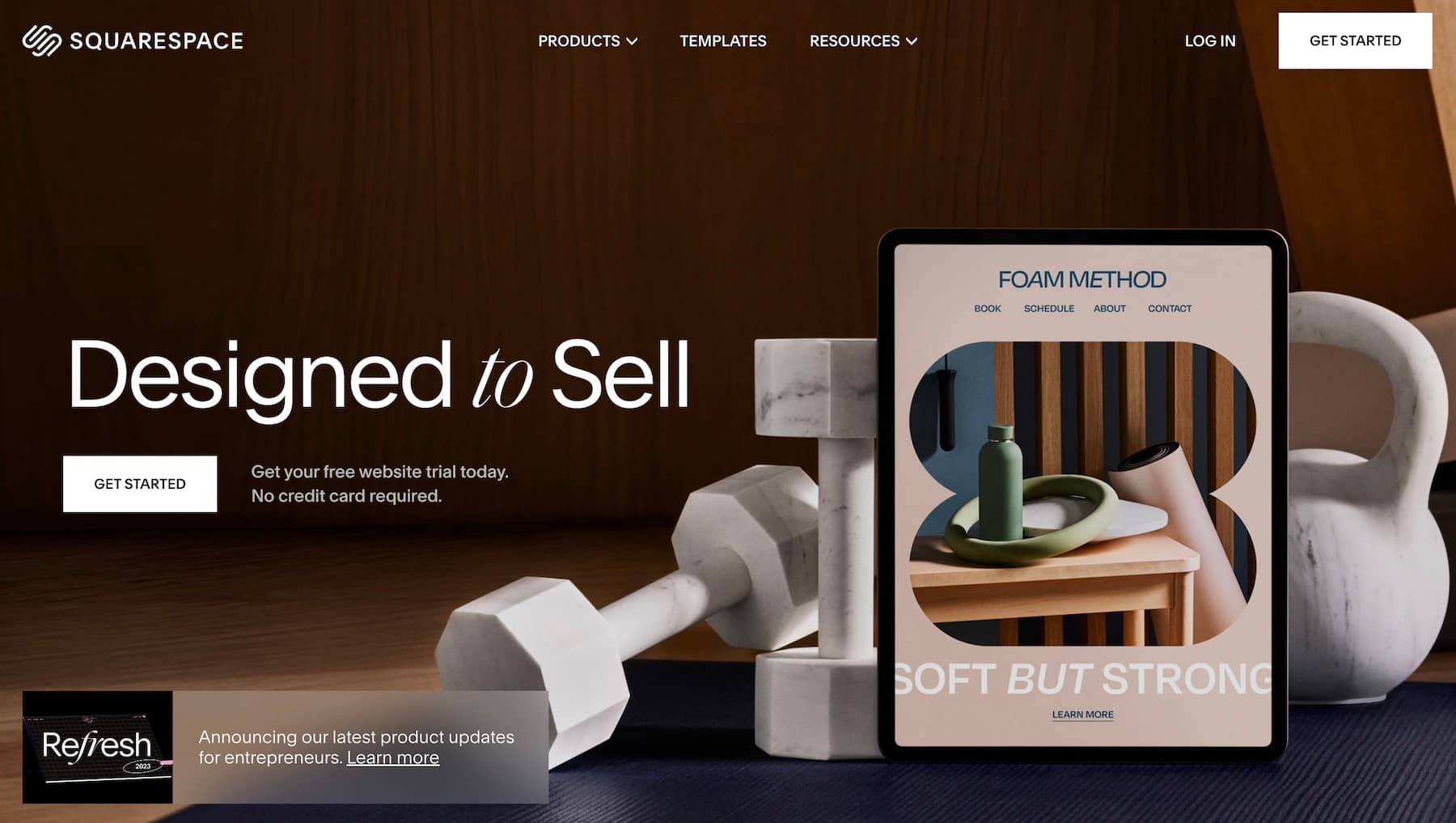
“Squarespace Review: Great for Some …” from themeisle.com and used with no modifications.
Squarespace has built its reputation on delivering visually striking websites, and its e-commerce functionality follows the same design-first philosophy. The platform offers the most aesthetically sophisticated templates among beginner-friendly options, making it ideal for products where presentation significantly impacts purchasing decisions. Fashion, home goods, and luxury items benefit particularly from Squarespace’s emphasis on large, high-quality images and elegant typography.
WooCommerce: Free But Requires More Technical Skills

“Is WooCommerce Free? What it Costs to …” from progressus.io and used with no modifications.
WooCommerce represents a different approach to e-commerce by functioning as a plugin for WordPress rather than an all-in-one platform. This open-source solution powers approximately 28% of all online stores, making it the most widely used e-commerce software in the world. Its popularity stems from the combination of flexibility and zero licensing costs, which appeals to budget-conscious entrepreneurs. For those interested in exploring more options, check out this list of the best free e-commerce platforms.
True Costs Beyond the “Free” Label
While WooCommerce itself costs nothing to install, the total expense of running a WooCommerce store often surprises beginners. You’ll need to separately purchase domain registration ($10-15/year), web hosting ($5-30/month), security certificates, and premium themes ($50-200 one-time). Payment processing extensions for major providers like PayPal and Stripe are free, but specialized payment gateways often require paid extensions ranging from $49-$199 annually. When totaling these expenses, many beginners discover that “free” WooCommerce may actually cost more than all-inclusive platforms in the first year.
Setup Process Compared to Other Platforms
The WooCommerce setup process involves significantly more technical steps than hosted platforms like Shopify or Square Online. You’ll need to secure hosting, install WordPress, configure basic settings, install the WooCommerce plugin, and then begin the actual store setup process. This typically takes beginners 3-5 hours compared to 1-2 hours on Shopify or Square. The benefit of this complexity is complete ownership of your store’s infrastructure and freedom from platform restrictions, but this comes at the cost of a steeper learning curve and ongoing maintenance responsibilities.
When WooCommerce Makes Sense for Beginners
Despite its technical challenges, WooCommerce remains appropriate for certain types of beginners. Those with existing WordPress websites can add e-commerce capabilities without migrating to a new platform. Budget-conscious entrepreneurs with moderate technical abilities (or willing to learn) can achieve significant cost savings at scale, particularly when selling hundreds of products.
WooCommerce also makes sense for sellers with unique business models that require customized checkout flows or specialized product types. The platform’s infinite flexibility accommodates business requirements that might be impossible on more restricted platforms. The ecosystem offers over 400 official extensions and thousands of third-party add-ons to extend functionality in nearly any direction.
For sellers exploring diverse business strategies, such as Amazon FBA vs. dropshipping, WooCommerce provides the necessary tools and integrations to support these models.
Beginners who enjoy learning technical skills and want complete control over their e-commerce infrastructure will find WooCommerce rewarding despite its complexity. The investment in the steeper learning curve pays dividends through unlimited customization potential and absence of platform fees on sales.
Wix E-commerce: The Creative-Friendly Option
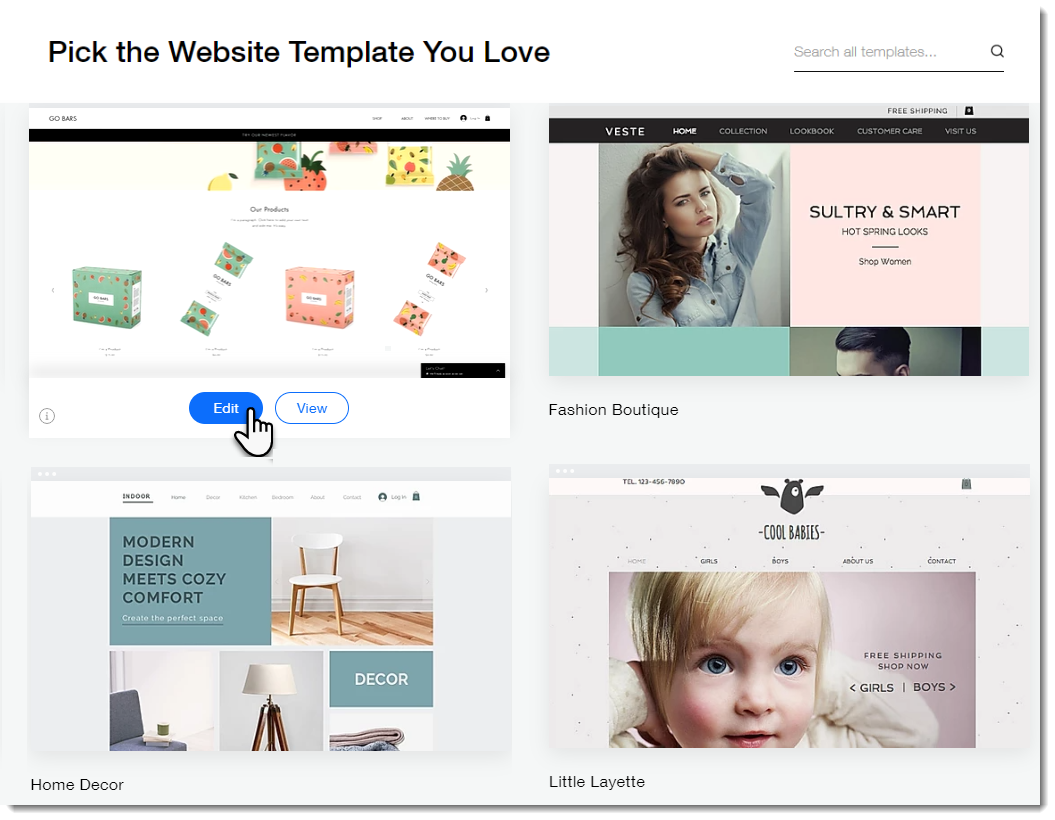
“Wix Stores: About Wix Stores | Help …” from support.wix.com and used with no modifications.
Wix has evolved significantly from its early days as a simple website builder, now offering robust e-commerce functionality that rivals dedicated platforms. What distinguishes Wix from competitors is its unmatched creative freedom combined with beginner-friendly simplicity. The platform now powers over 500,000 online stores globally, with particular popularity among creative professionals and service-based businesses adding product sales.
Drag-and-Drop Store Building
Wix’s standout feature remains its true drag-and-drop editor that gives precise control over every visual element of your store. Unlike template-based platforms that restrict modifications to predetermined areas, Wix allows placing elements anywhere on the page with pixel-perfect precision. This freedom enables beginners to create truly unique store designs that precisely match their brand vision without requiring any coding knowledge. The editor includes over 800 design elements, from animated buttons to video backgrounds, giving beginners professional design capabilities previously requiring experienced web designers.
For those looking to optimize their store’s visibility, exploring the best SEO automation tools can further enhance their online presence.
E-commerce Plan Options and Limitations
Wix offers three dedicated e-commerce plans: Business Basic ($27/month), Business Unlimited ($32/month), and Business VIP ($59/month). All plans include essential features like abandoned cart recovery, customer accounts, and unlimited products. The platform distinguishes itself by avoiding transaction fees on any plan, meaning Wix doesn’t take a percentage of your sales beyond standard payment processing fees.
However, Wix does have limitations worth considering. The platform restricts your ability to export store data, making migration to another platform challenging as your business grows. Product options and variants are also more limited than Shopify, with a maximum of 6 options per product and 100 total variants, which may restrict stores selling highly customizable products.
Product Management Tools
Wix’s product management system strikes an excellent balance between simplicity and functionality for beginners. The product editor uses an intuitive form-based approach that walks new sellers through all necessary information fields. The platform supports both physical and digital products, with automated fulfillment options for downloadable items. Inventory management features include low-stock alerts, automatic tracking, and bulk editing capabilities that simplify managing growing product catalogs. For beginners with under 100 products, Wix’s straightforward approach eliminates much of the confusion that often accompanies initial product setup. If you’re considering different e-commerce strategies, it’s helpful to explore Amazon FBA vs. dropshipping to find the best fit for your business model.
Payment Processing Options
Wix partners with over 50 payment providers worldwide, offering excellent flexibility for international sellers. The platform’s own Wix Payments service (available in 14 countries) simplifies setup with competitive rates of 2.9% + 30¢ per transaction. Alternative options include PayPal, Stripe, Square, and numerous regional payment methods. This diversity allows beginners to offer payment options familiar to their specific target audience, increasing conversion rates from the start. For those exploring e-commerce solutions, you might find this review of the best e-commerce platforms helpful.
The platform also excels at presenting multiple payment options during checkout in a clean, conversion-optimized format. Customers can easily toggle between saved payment methods, reducing abandonment during the critical payment step. For beginners concerned about maximizing early sales, this streamlined checkout experience removes barriers that often plague new stores.
Squarespace: Beautiful Stores Without the Fuss

“Squarespace Website Examples – Made …” from www.squarespace.com and used with no modifications.
Squarespace has built its reputation on stunning visuals and elegant design, making it the platform of choice for image-conscious brands. The platform’s e-commerce functionality has matured significantly in recent years, now offering a compelling alternative to dedicated e-commerce platforms. Its appeal lies in the perfect balance of aesthetic sophistication and operational simplicity, ideal for beginners who refuse to compromise on visual presentation.
Where other platforms focus primarily on functionality, Squarespace prioritizes the customer experience through immersive design. This approach particularly benefits products where emotional connection and visual appeal drive purchasing decisions, such as fashion, home décor, and specialty foods.
Template Quality vs. Other Platforms
Squarespace’s template library represents the gold standard in pre-designed storefronts, featuring sophisticated layouts created by professional designers rather than generic templates. Each design incorporates current visual trends, proper typography hierarchies, and optimal white space utilization that would cost thousands to custom-develop. Compared to other beginner platforms where templates often look noticeably “templated,” Squarespace stores achieve a custom-designed aesthetic immediately. The platform’s responsive templates automatically adjust to different screen sizes, ensuring your store looks equally polished on mobile devices without requiring separate mobile design work.
E-commerce Features for Beginners
Behind the beautiful exterior, Squarespace delivers a surprisingly robust set of e-commerce tools tailored to beginners. The product management system uses a visual approach that emphasizes product photography while streamlining information entry. Inventory tracking, automatic low-stock emails, and customer account management are all included in even the basic Commerce plan.
Where Squarespace particularly excels is in content-commerce integration, seamlessly blending blog posts, lookbooks, and product showcases to create immersive shopping experiences. This makes it ideal for brands where storytelling and education play important roles in the purchasing decision. The platform also offers abandoned cart recovery (saving approximately 15% of otherwise lost sales) and real-time shipping rate calculations to improve conversion rates.
Pricing Structure and Value
Squarespace offers two e-commerce-specific plans: Business ($33/month with 3% transaction fees) and Basic Commerce ($36/month with zero transaction fees). The slight price difference makes the Basic Commerce plan clearly superior for most sellers, as the transaction fees on the Business plan quickly exceed the monthly premium once sales reach approximately $100. Both plans include hosting, security, unlimited bandwidth, and full access to the template library.
While not the cheapest option, Squarespace delivers exceptional value for visually-oriented businesses. The professional design quality alone would cost $2,000-5,000 if custom-developed, making the monthly subscription a bargain for brands where aesthetic presentation directly impacts perceived value and price points. The all-inclusive nature of Squarespace plans also prevents the surprise costs that often accumulate on platforms requiring numerous paid extensions for basic functionality.
The platform’s primary limitation lies in its more restricted app ecosystem compared to Shopify or WooCommerce. Advanced features like subscription billing, comprehensive product bundles, or specialized shipping requirements may require upgrading to Squarespace’s Advanced Commerce plan ($65/month) or considering alternative platforms as your business grows.
- Zero transaction fees on Commerce plans (compared to 2-3% on many competitor platforms)
- Professionally designed templates that rival custom websites
- Built-in tax calculation and shipping rate display
- Integrated email marketing tools with customer segmentation
- Mobile-optimized checkout with Apple Pay and Google Pay support
One unique advantage for beginners is Squarespace’s unified dashboard that handles both website content and store management in a single interface. This eliminates the context-switching that often confuses new sellers on platforms where content management and e-commerce administration are separate systems.
Platform Comparison: Making Your Final Decision
Choosing the right e-commerce platform as a beginner ultimately comes down to your specific business needs, technical comfort level, and budget constraints. While each platform has its strengths, the best choice depends on aligning platform capabilities with your particular situation.
To simplify your decision process, we’ve compared the top contenders across the factors that matter most to new store owners. This head-to-head comparison reveals clear patterns that can guide you toward the platform best suited to your specific circumstances.
Pricing Side-by-Side for Startup Budgets
| Platform | Starter Plan | Transaction Fees | Annual Savings | Free Trial/Plan |
|---|---|---|---|---|
| Shopify | $29/month | 2.9% + 30¢ | 20% with annual plan | 14 days |
| Wix | $27/month | None | 17% with annual plan | 14 days |
| Square Online | $0/month | 2.9% + 30¢ | N/A | Free plan available |
| Big Cartel | $0/month (5 products) | None | 17% with annual plan | Free plan available |
| Squarespace | $36/month | None | 30% with annual plan | 14 days |
| WooCommerce | $0 + hosting ($5-30/mo) | Varies by payment processor | Varies by host | N/A |
Setup Time Requirements
The time investment required to launch a functional store varies dramatically between platforms. Square Online and Big Cartel offer the fastest path to launch, with most beginners able to create a basic store in 1-3 hours. Their streamlined setup wizards prioritize getting products online quickly over extensive customization options.
Shopify and Wix represent the middle ground, typically requiring 4-8 hours for beginners to configure a professional-looking store with 10-20 products. Shopify’s highly structured approach guides users through a logical setup process, while Wix’s flexibility means more time spent on design decisions but greater creative control. WooCommerce demands the highest time investment, with most beginners needing 8-12 hours to handle technical setup before even beginning to add products or customize the store’s appearance.
For those considering different e-commerce models, it’s worth exploring Amazon FBA vs. dropshipping to determine the best fit for their business.
Growth Potential as Your Business Scales
Platform scalability becomes critical as your business grows beyond the initial startup phase. Shopify clearly leads in this category, with its tiered plan structure supporting businesses from first sale to millions in revenue. The platform’s enterprise solution, Shopify Plus, powers billion-dollar brands like Gymshark and Allbirds, ensuring you won’t outgrow the platform. WooCommerce offers similar unlimited scaling potential but requires progressively more technical management as transaction volume increases, often necessitating developer assistance at higher growth stages.
Payment Processing Fees Comparison
Payment processing fees significantly impact profitability, especially for lower-margin products. Square Online and Shopify maintain standard rates of 2.9% + 30¢ per transaction across most payment methods. Wix and Squarespace (on Commerce plans) charge no platform transaction fees beyond what payment processors require, creating savings of approximately 2-3% compared to platforms with additional fees. Big Cartel charges no platform fees but limits payment options primarily to PayPal and Stripe. WooCommerce offers the most flexibility, supporting dozens of payment providers with varying fee structures, though this requires more setup time to optimize.
Common Beginner Mistakes When Choosing a Platform
New e-commerce entrepreneurs consistently make several predictable mistakes when selecting their first platform. Recognizing these common pitfalls before making your decision can save thousands in unnecessary expenses and prevent the need to migrate to a different platform just months after launch.
Overestimating Your Technical Skills
The most common mistake beginners make is overestimating their technical abilities or willingness to learn complex systems. Many are drawn to platforms like WooCommerce by the promise of unlimited flexibility and lower costs, only to find themselves overwhelmed by technical requirements. Be honest about your comfort level with concepts like DNS configuration, SSL certificates, and PHP version compatibility. If these terms are unfamiliar, hosted platforms like Shopify or Square Online will likely provide a much smoother experience despite potentially higher monthly costs.
Underestimating True Costs
The advertised monthly price rarely represents the total cost of running an e-commerce store. Many beginners focus exclusively on the base subscription fee while overlooking transaction fees, payment processing costs, app expenses, and theme purchases that can more than double the effective monthly cost. To mitigate these expenses, exploring side hustles using AI tools can provide additional income streams.
On Shopify, for example, essential apps for email marketing, upselling, and improved search functionality can easily add $50-100 monthly beyond the base subscription. WooCommerce’s “free” label obscures the necessary expenses for hosting, security, and premium extensions that most stores require for professional functionality.
The most transparent approach is calculating your all-in costs based on projected sales volume. For a store selling $5,000 monthly, platform transaction fees of 2% represent an additional $100 monthly expense that might make a higher-tier plan with no transaction fees more economical despite the higher base price.
- Base subscription fees (monthly or annual)
- Platform transaction fees (percentage of sales)
- Payment processing fees (credit card processing)
- Essential app/extension costs for core functionality
- Premium theme or design customization expenses
Ignoring Mobile Shopping Experience
Despite mobile devices generating over 70% of e-commerce traffic, many beginners focus their evaluation entirely on desktop store appearance. This misalignment leads to lost sales when customers encounter difficult navigation, tiny buttons, or checkout flows not optimized for touchscreens. Platforms like Square Online and Shopify prioritize mobile-first design with templates specifically engineered for small screens. Always test your store’s mobile experience thoroughly before launch, ideally on both Android and iOS devices to ensure compatibility across the mobile ecosystem.
Choosing Based on Price Alone
The platform with the lowest monthly fee rarely delivers the best value for beginners. Free and ultra-low-cost platforms typically sacrifice either ease-of-use or conversion-optimized features that directly impact sales performance. A platform costing $10-20 more monthly but delivering a 20% higher conversion rate through better checkout optimization, abandoned cart recovery, and product presentation will pay for itself many times over. Consider price in context of the complete package—support quality, template design, built-in marketing tools, and time savings all deliver concrete value beyond the basic ability to list products and accept payments.
Setting Up Your First Store: Next Steps
Once you’ve selected the platform that best matches your requirements, a structured approach to store setup will minimize frustration and accelerate your path to launch. Following a proven process helps ensure you don’t overlook critical configuration steps that could impact customer experience or legal compliance.
Begin with the technical foundation—domain connection, payment processing, and tax settings—before moving to the creative aspects of store design. This ensures the operational infrastructure is solid before investing time in customization. Most platforms offer setup wizards that walk you through these steps in a logical sequence, and some even provide insights into Amazon FBA vs. dropshipping as part of their guidance.
Prioritize completing one section fully before moving to the next rather than partially configuring multiple areas. This approach creates visible progress and prevents the feeling of being overwhelmed by too many simultaneous tasks.
Pre-Launch Checklist
Before making your store public, run through this comprehensive checklist to catch common oversights. Even experienced developers regularly use pre-launch checklists to ensure nothing critical falls through the cracks during the excitement of launching.
Testing from the customer perspective is particularly important—complete actual test purchases using different payment methods and devices to experience your checkout flow firsthand. Many beginners skip this step and miss critical usability issues that are easily fixed before launch but create negative first impressions once customers encounter them.
- Verify all payment methods work with test transactions
- Confirm automated emails are sending properly
- Check mobile responsiveness on multiple devices
- Ensure shipping rates calculate correctly
- Test contact forms and customer service channels
- Verify legal pages (terms, privacy policy) are published
- Check SEO basics (titles, descriptions, URLs)
- Confirm all product images load properly
- Review checkout process for usability
- Set up Google Analytics or equivalent tracking
Many platforms offer built-in store review tools that automatically check for configuration issues or missing elements. Shopify’s Store Grader and Squarespace’s SEO checklist provide systematic ways to identify and resolve potential problems before they impact customers.
Don’t overlook the importance of legal compliance elements like privacy policies, terms of service, and cookie notifications. These not only protect your business legally but are often required for payment processor approval and advertising account creation.
Essential Apps and Integrations
While most platforms provide solid core functionality, certain third-party apps can significantly improve your store’s performance from day one. Email marketing integration is particularly critical for capturing visitor information even before they purchase. Tools like Klaviyo (for Shopify), Mailchimp (works with most platforms), or built-in email tools from Squarespace and Wix help build your most valuable asset—a customer email list—from your first visitors. Other high-value additions include social proof tools that display recent purchases, analytics that reveal visitor behavior patterns, and recovery systems that automatically contact customers who abandon carts before completing purchases.
Setting Realistic Timeline Expectations
First-time store builders consistently underestimate the time required to launch a professional e-commerce site. While platforms advertise the ability to “launch in minutes,” a thoughtfully constructed store typically requires 15-40 hours of focused work, spread across 1-3 weeks for most beginners. Product photography, description writing, and policy creation often consume more time than the technical setup. Set realistic expectations by creating a project timeline with specific milestones, allowing adequate time for learning platform-specific details and making revisions based on feedback from test users before your public launch.
FAQ: Beginner E-commerce Platform Questions
Remember that the “best” platform is highly dependent on your specific needs—a freelance artist selling digital downloads has very different requirements than a retailer with hundreds of physical products and complex shipping needs.
Do I need coding knowledge to build an online store?
No, modern e-commerce platforms like Shopify, Wix, Square Online, Big Cartel, and Squarespace require absolutely no coding knowledge to create professional-looking stores. These platforms use visual editors and pre-designed templates that can be customized through point-and-click interfaces. While knowing HTML/CSS can enable more advanced customizations, it’s entirely optional. Only WooCommerce and similar self-hosted solutions benefit significantly from basic technical knowledge, though even these offer no-code options through visual builder plugins.
Which platform has the lowest transaction fees?
Wix, Squarespace (Commerce plans), and Big Cartel charge no platform transaction fees beyond the standard payment processing costs from services like Stripe or PayPal (typically 2.9% + 30¢). Shopify charges additional transaction fees of 2%, 1%, or 0.5% unless you use their in-house payment processor, Shopify Payments. Square Online’s free plan includes a 2.9% + 30¢ fee structure. WooCommerce has no built-in transaction fees, but costs vary based on your chosen payment processors and their associated fees. For high-volume sellers, these percentage differences can represent thousands in monthly savings.
Can I switch platforms later if my business grows?
Yes, but platform migration involves varying degrees of difficulty and potential disruption. Moving from one platform to another typically requires transferring products, customer data, order history, and rebuilding design elements. Shopify, WooCommerce, and BigCommerce offer the most robust export tools that facilitate easier transitions. Squarespace and Wix have more limited data portability, making migrations from these platforms more labor-intensive. To minimize future migration headaches, choose a platform that aligns with your long-term growth projections rather than just meeting immediate needs.
For more insights, check out these SEO automation tools that can aid in your platform transition.
How much time does it take to set up a basic store?
For a basic store with 10-20 products, most beginners can complete the essential setup in 8-16 hours of focused work using user-friendly platforms like Shopify, Square Online, or Big Cartel. This includes product uploads, basic customization, payment setup, and shipping configuration. More complex stores with custom design requirements, extensive product catalogs, or specialized functionality can require 30-60 hours or more. The biggest time investment typically isn’t platform configuration but creating high-quality product content—professional photography, compelling descriptions, and policy pages often consume more time than technical setup.
For those looking to enhance their content, exploring AI copywriting tools might be beneficial.
What’s the difference between hosted and self-hosted platforms?
Hosted platforms (Shopify, Wix, Squarespace, Big Cartel, Square Online) provide complete infrastructure including hosting, security, and updates as part of their monthly subscription. These “all-in-one” solutions require no technical management and offer simplified setup with 24/7 support. Self-hosted platforms like WooCommerce require you to provide and manage your own web hosting, security certificates, and software updates. This approach offers greater flexibility and potentially lower costs but demands more technical knowledge and ongoing maintenance responsibility. For most beginners, hosted platforms provide a significantly smoother experience despite slightly higher monthly costs.
If you’re exploring e-commerce options, you might also consider the differences between Amazon FBA and dropshipping as part of your strategy.
Launching your first online store represents an exciting milestone in your entrepreneurial journey. By choosing a platform aligned with your technical comfort level, budget constraints, and business model, you’ll create a solid foundation for e-commerce success. The most important step is simply getting started—even a simple store that’s live and generating sales provides valuable real-world feedback that guides future improvements.
For those interested in exploring the technological advancements impacting online businesses, understanding 5G and AI connectivity trends can be crucial.
In today’s rapidly evolving digital landscape, businesses are increasingly seeking innovative ways to stay ahead of the competition. One such avenue is through leveraging the latest advancements in technology, such as 5G and AI connectivity, to enhance operational efficiency and customer engagement. By integrating these cutting-edge technologies, companies can unlock new opportunities for growth and streamline their processes to better meet the demands of the modern consumer.


Join the Conversation